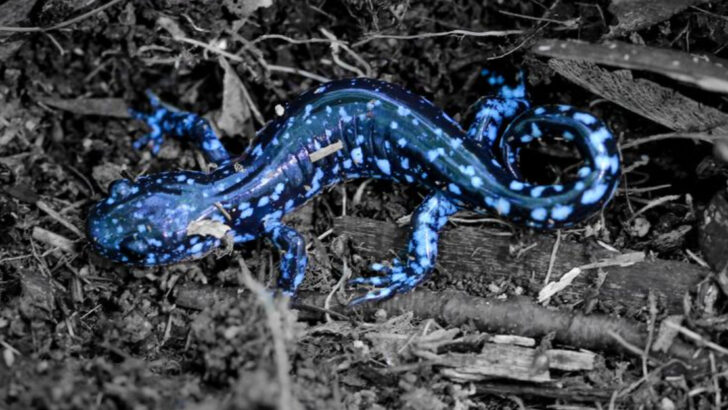Imagine a pristine wilderness untouched by roads, where the only sounds are the rustling of leaves and the calls of wildlife. In Minnesota, this rare sanctuary exists, home to over 1,000 crystal-clear lakes and an abundance of life that thrives far from human interference.
In this remote paradise, nature’s harmony reigns supreme. Every species, from elusive predators to the smallest critters, has adapted to the unique challenges of this secluded environment. It’s a place where animals can roam freely, unimpeded by civilization’s reach.
Join us as we explore 27 remarkable wildlife species that call this secluded wilderness home. Whether it’s the majestic wolves or the playful otters, each creature adds to the rich diversity of this extraordinary ecosystem.
Common Loon

The common loon, a symbol of northern wilderness, thrives in Minnesota’s lake-rich environment. Its haunting call resonates across the water, an echo of solitude and mystery.
Loons are expert divers, capable of swimming up to 200 feet below the surface in pursuit of fish. During the breeding season, their enchanting plumage and red eyes make them unmistakable.
They build nests on quiet, isolated shorelines, ensuring the safety of their young. Observing a loon family is a special experience, as chicks often ride on their parents’ backs. This iconic bird embodies the spirit of the wilderness.
American Black Bear
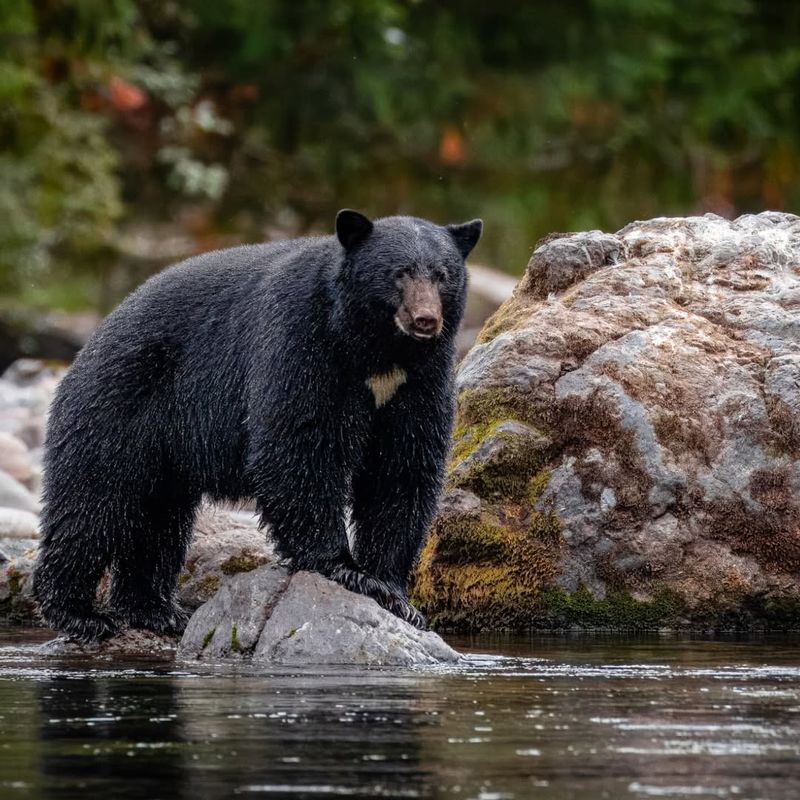
American black bears roam the vast expanses of Minnesota’s wilderness. These adaptable creatures find abundant food sources in the forests, from berries to fish. Despite their size, bears are relatively shy and prefer to avoid human contact.
In autumn, they gorge on food to build fat reserves for winter hibernation. Cubs are born in the safety of the den, emerging in spring ready to learn survival skills. Their playful antics and curious nature make them a joy to observe, albeit from a respectful distance.
Black bears contribute to the ecosystem by dispersing seeds and aerating the soil.
Timber Wolf
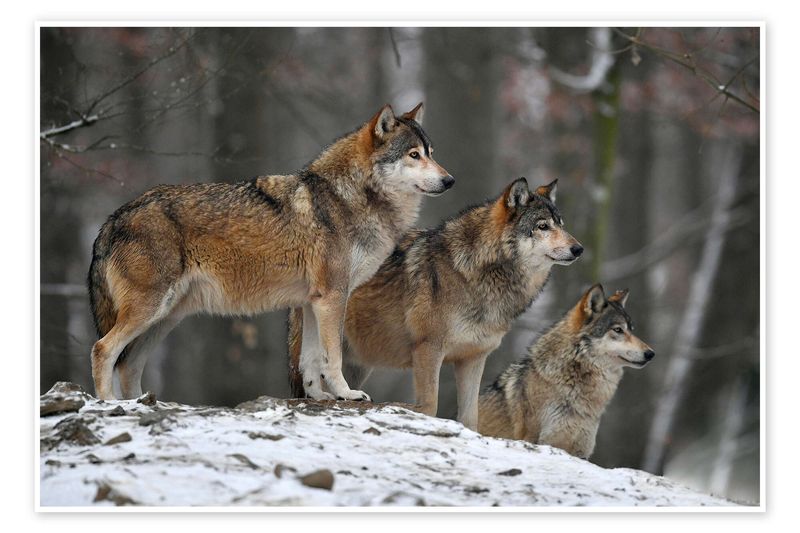
Timber wolves, also known as gray wolves, are keystone predators in Minnesota’s wilderness. They form tight-knit packs, working together to hunt and raise their young. Their howls can be heard echoing through the forest, marking territory and communicating with pack members.
These wolves thrive in the remote, roadless areas, where human disturbance is minimal. Their presence helps control prey populations, maintaining ecological balance. Observing a pack in action is a testament to their social complexity and intelligence.
The timber wolf’s resilience is a symbol of wild Minnesota, embodying the untamed spirit of the land.
Bald Eagle
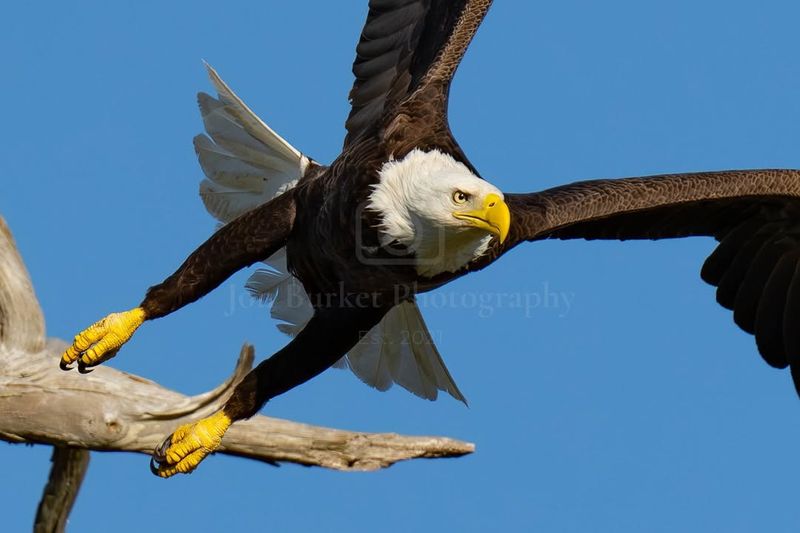
The bald eagle, a national emblem, finds sanctuary in Minnesota’s pristine wilderness. These raptors build large nests high in trees, often near water where fish are abundant. Their keen eyesight allows them to spot prey from great distances.
Eagles mate for life, returning to the same nesting sites annually. Watching an eagle soar is inspiring, a reminder of freedom and strength. Once endangered, they have made a remarkable recovery, thriving in this remote habitat.
Their presence signifies a healthy ecosystem, as they sit atop the food chain. The bald eagle is a true icon of wilderness majesty.
Moose
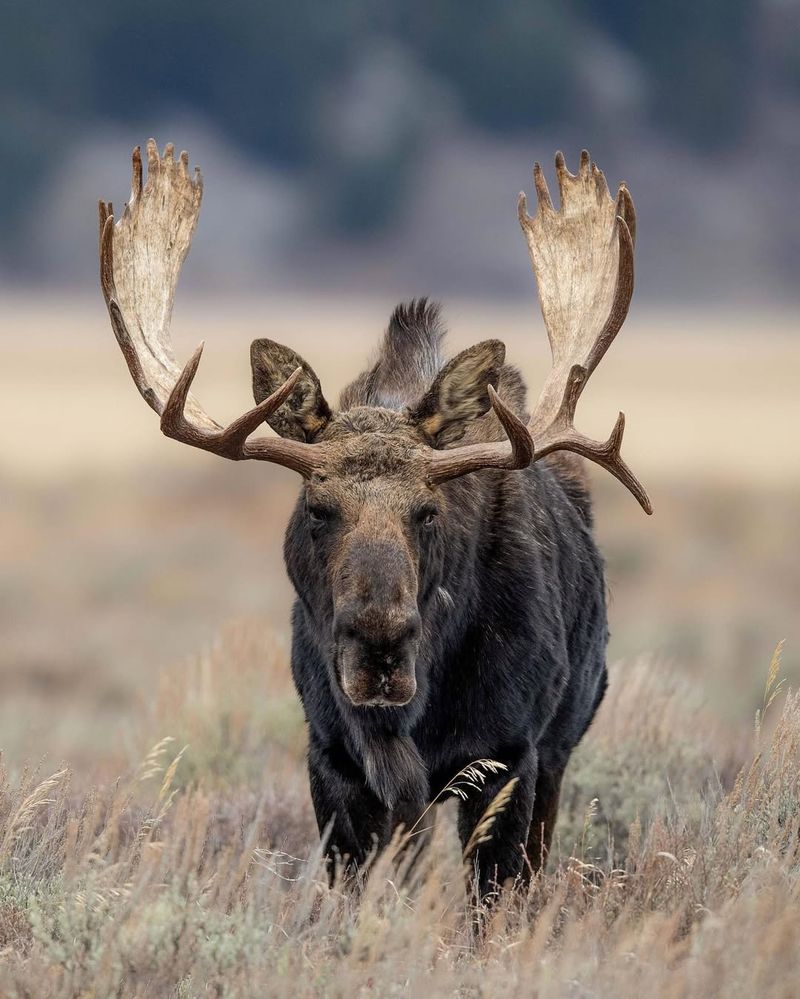
Moose are the largest members of the deer family, and Minnesota’s expansive wilderness is ideal for them. They are often seen feeding on aquatic plants in lakes and marshes. Despite their size, moose are surprisingly agile swimmers.
During the rut, bull moose showcase their impressive antlers in displays of strength. Calves are born in the spring, quickly learning to navigate their watery world. Observing these gentle giants is a highlight for many visitors.
Moose populations fluctuate with environmental changes, but they remain a vital part of the wilderness ecosystem, contributing to biodiversity.
Beaver
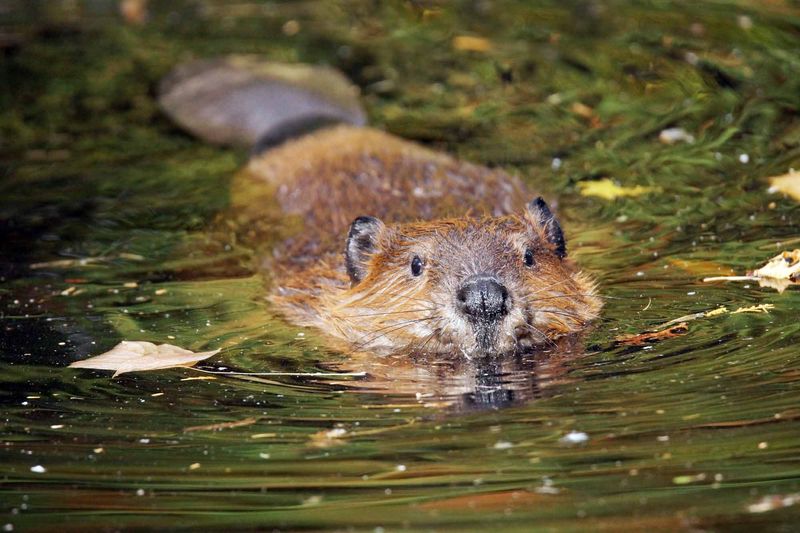
Beavers are nature’s engineers, shaping Minnesota’s landscapes with their dam-building prowess. These industrious rodents create wetlands that support diverse wildlife. Their lodges provide shelter from predators and harsh weather.
Beavers are skilled at felling trees, their sharp teeth cutting through wood with ease. They are most active at dusk and dawn, making them a fascinating sight for patient observers. By creating ponds, beavers enhance water quality and create habitats for fish and birds.
Their environmental impact is profound, demonstrating the interconnectedness of species within Minnesota’s wilderness.
Snowshoe Hare
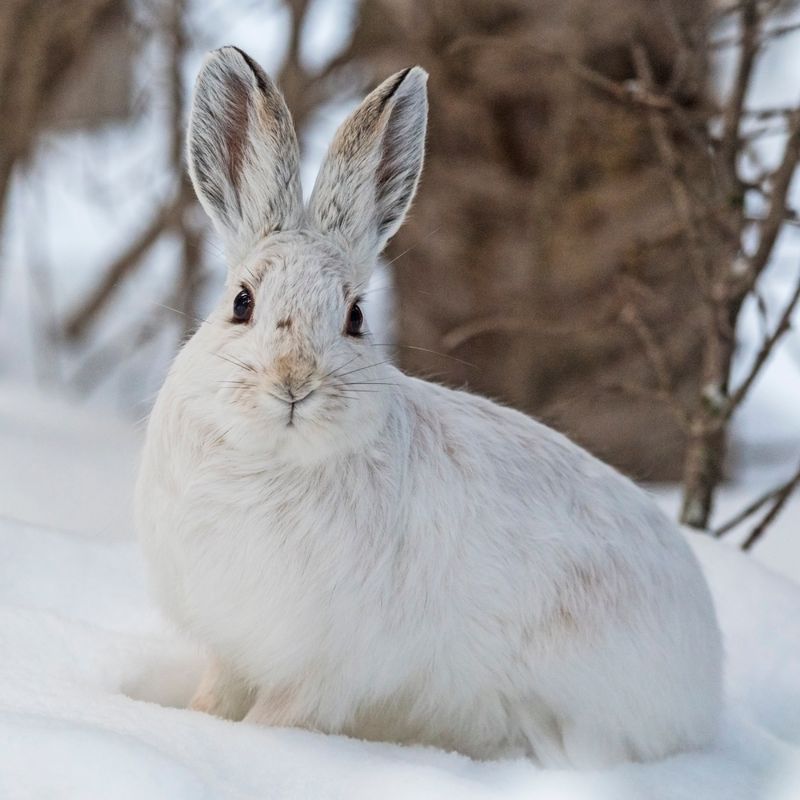
The snowshoe hare is a master of disguise, its fur changing color with the seasons. In winter, its white coat blends seamlessly with the snow, protecting it from predators. In summer, it dons a brown coat to match the forest floor.
Hares are most active during twilight hours, using their large hind feet to navigate through deep snow. They play a crucial role in the food chain, serving as prey for larger animals such as lynx and owls.
Their adaptability is key to survival, illustrating the dynamic balance of life in Minnesota’s wilderness.
Great Gray Owl
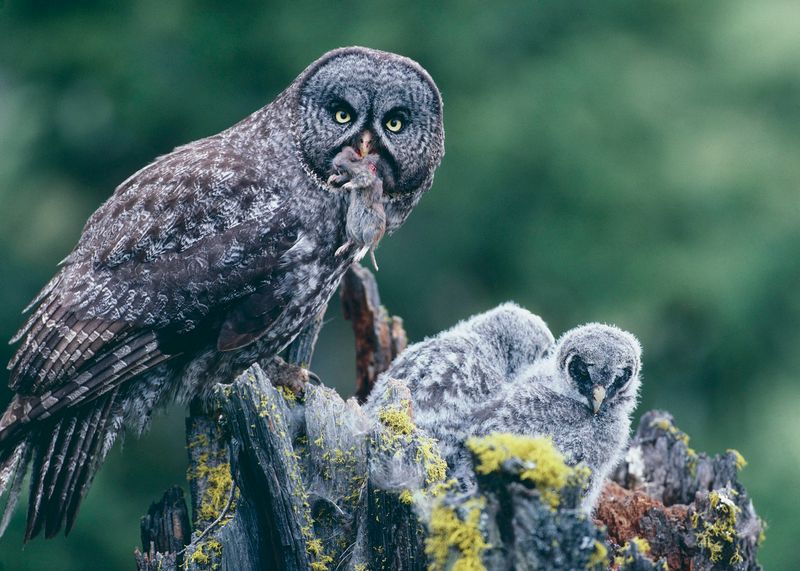
The great gray owl, with its distinctive facial disks and piercing yellow eyes, is one of Minnesota’s most enigmatic birds of prey. It relies on its acute hearing to locate prey beneath the snow, making it a formidable hunter.
These owls inhabit dense forests and open meadows, where they glide silently in search of small mammals. Their presence is a testament to the health of the forest ecosystem.
Spotting a great gray owl can be challenging, but the experience is unforgettable. Their silent flight and calm demeanor make them a symbol of wisdom and mystery in the wild.
Northern Pike
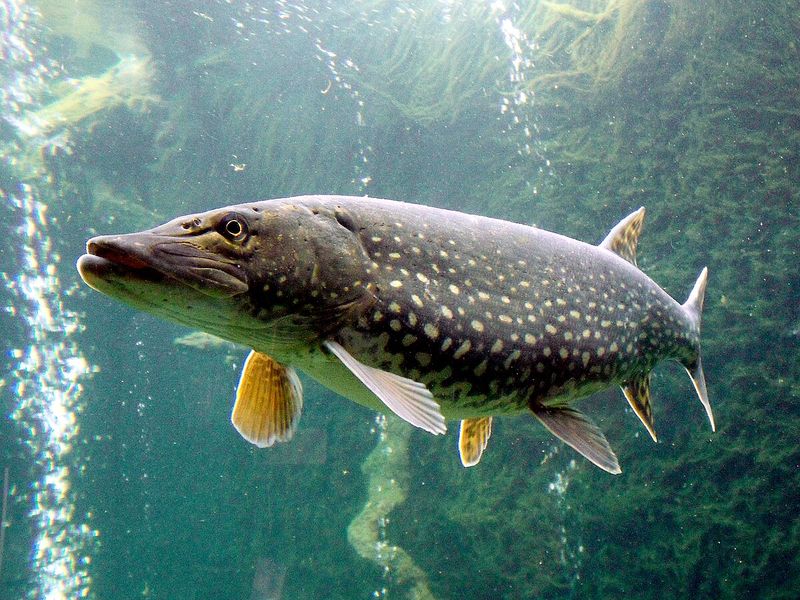
Northern pike are apex aquatic predators in Minnesota’s lakes, known for their speed and ferocity. They lurk among aquatic vegetation, waiting to ambush smaller fish. Their long, torpedo-shaped bodies are built for sudden bursts of speed.
Pike thrive in healthy, clean water, making them indicators of environmental quality. Anglers prize them for their fighting spirit and size. Catching a northern pike is an exhilarating experience, often requiring skill and patience.
These fish maintain the balance of the underwater ecosystem, contributing to the biodiversity of Minnesota’s lake system.
Trumpeter Swan
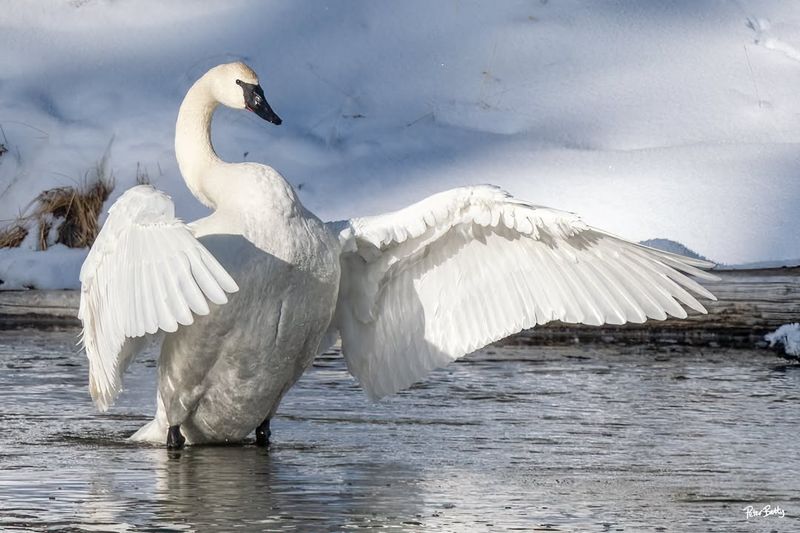
Trumpeter swans, the largest waterfowl species in North America, grace Minnesota’s lakes with their elegance. Their haunting, trumpet-like calls echo across the water, a sound synonymous with wilderness.
These swans form monogamous pairs, often returning to the same nesting sites each year. Their large nests are constructed from reeds and grasses on secluded shorelines. Witnessing a flock in flight is a breathtaking sight, their wings beating in harmonious rhythm.
Trumpeter swans were once endangered but have made a remarkable comeback. Their presence symbolizes hope and resilience in the natural world.
Canada Lynx
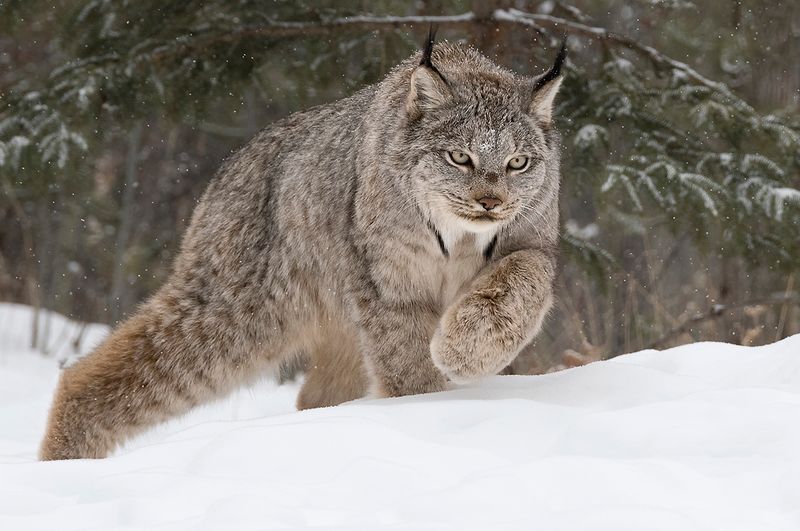
The Canada lynx, with its tufted ears and snowshoe-like paws, is perfectly adapted to the cold, snowy environments of Minnesota. These elusive felines are solitary hunters, primarily preying on snowshoe hares.
Lynx are known for their remarkable patience and stealth, often stalking prey for hours. Their thick fur provides insulation against harsh winters, allowing them to thrive in remote areas.
Spotting a lynx is a rare and thrilling experience, as they are masters of camouflage. Their presence is a testament to the pristine conditions of Minnesota’s wilderness.
River Otter
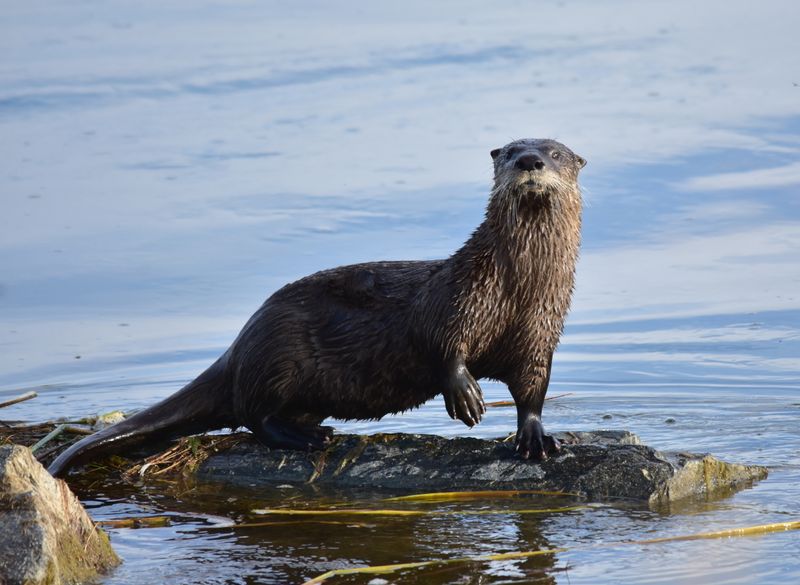
River otters are the acrobats of Minnesota’s waterways, known for their playful behavior and agility in the water. Their sleek bodies and webbed feet make them excellent swimmers, able to catch fish with ease.
Otters live in family groups, often seen sliding down muddy or snowy banks for fun. Their presence indicates clean, healthy water systems. Observing otters is a delight, as they seem to embody joy and curiosity.
These charismatic creatures contribute to the ecological balance by controlling fish populations and enhancing aquatic biodiversity.
Ruffed Grouse
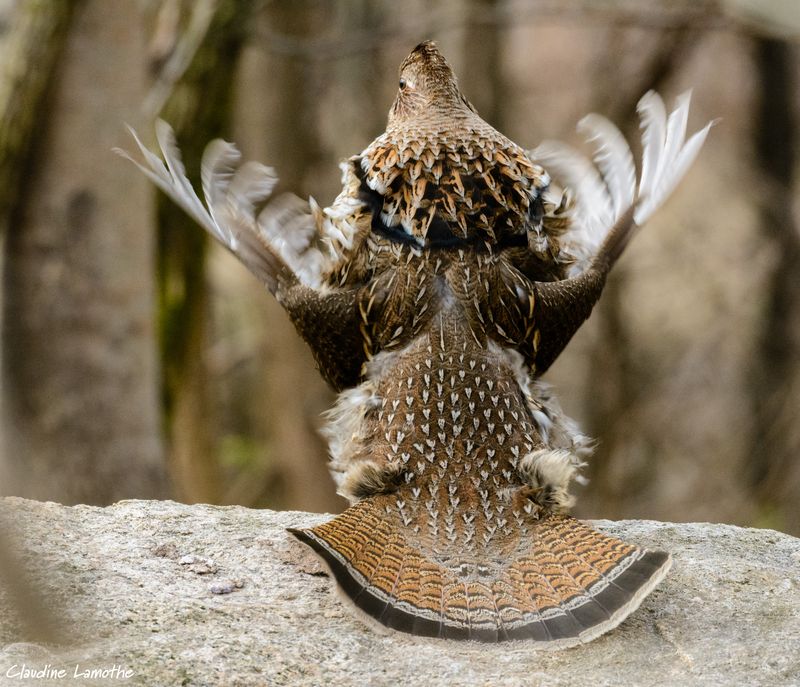
The ruffed grouse is a woodland bird known for its distinctive drumming display, a sound created by rapidly beating its wings. This display is a sign of territoriality and attracts mates.
Grouse are well camouflaged, blending seamlessly with the forest floor. They feed on a variety of plants, seeds, and insects, contributing to the forest’s ecological diversity. In winter, they burrow into snow for warmth and protection.
Spotting a ruffed grouse can be challenging, but their unique behavior and adaptation to the seasonal changes make them a fascinating species to observe.
Eastern Timber Rattlesnake
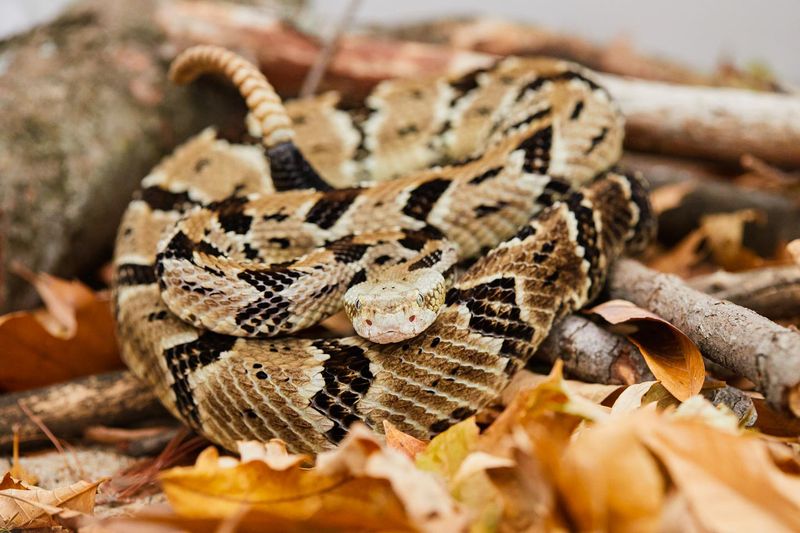
The eastern timber rattlesnake, a symbol of the wild, is a rare but integral part of Minnesota’s ecosystem. These snakes are shy and reclusive, often avoiding human encounters.
Rattlesnakes use their venom to subdue prey, primarily small mammals. Their distinctive rattle warns potential threats to keep a safe distance. They prefer rocky outcrops and sunny hillsides, where they can bask and hunt.
While encounters are rare, the presence of timber rattlesnakes indicates a healthy, undisturbed habitat. They play a crucial role in controlling rodent populations, maintaining ecological balance.
Eastern Cottontail Rabbit
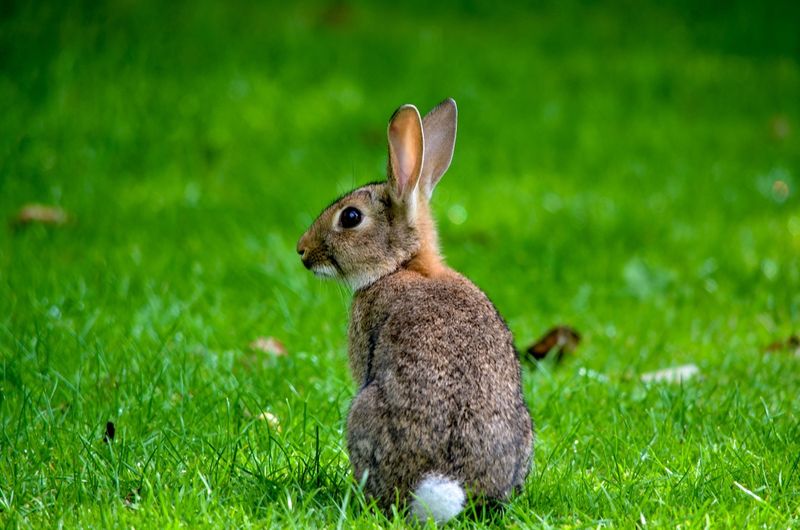
Eastern cottontail rabbits are a common sight in Minnesota’s meadows and woodland edges. Their large ears and fluffy tails make them easily recognizable. They are most active during dawn and dusk, feeding on grasses and herbs.
Rabbits play a crucial role in the food chain, providing sustenance for a variety of predators. Their reproductive rate ensures their populations remain stable despite predation. Observing a cottontail hopping through a meadow is a delightful experience.
These rabbits are adaptable, thriving in different environments and showcasing the diversity of life in Minnesota’s wilderness.
Mallard Duck
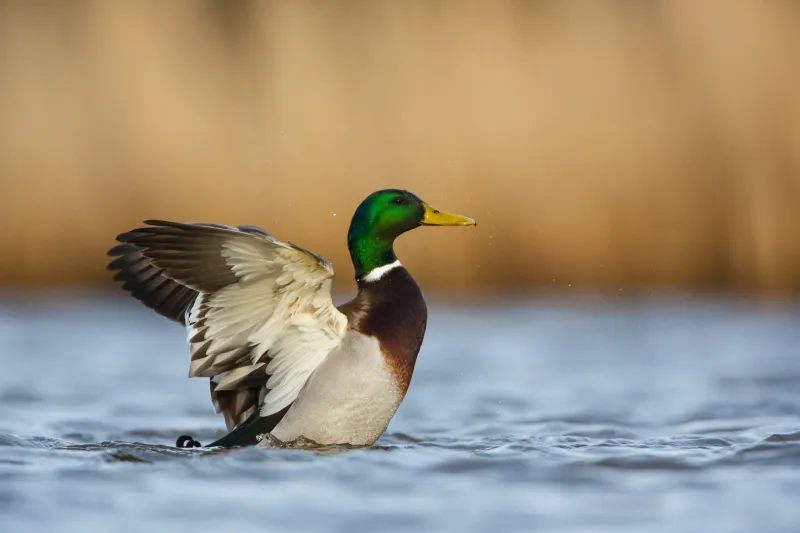
Mallard ducks are a familiar presence on Minnesota’s lakes and ponds, their vibrant plumage a splash of color against the water. These adaptable birds are found in a variety of wetland habitats, from small ponds to large lakes.
Mallards are dabbling ducks, feeding on aquatic plants and small invertebrates. They are social birds, often seen in pairs or small flocks. Their distinctive quack is a familiar sound in wetland areas.
Watching a mallard glide across a lake is calming, a reminder of the simple beauty of nature. They contribute to the biodiversity of Minnesota’s wetlands.
Red Fox
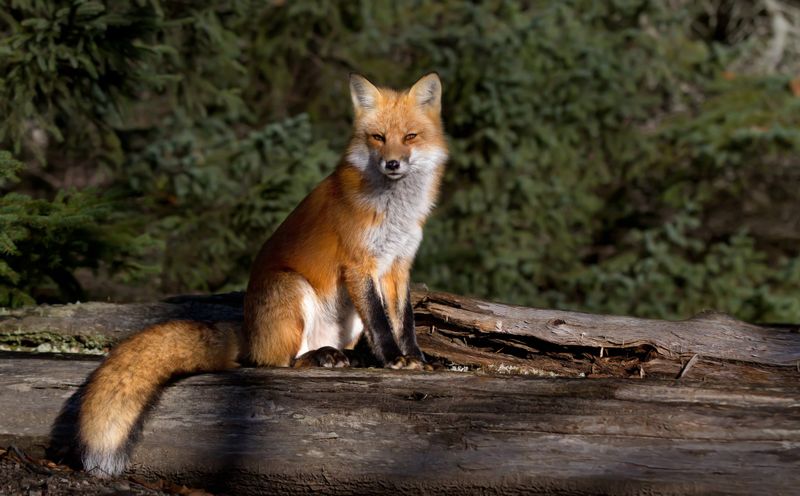
Red foxes are cunning predators, known for their intelligence and adaptability. They roam Minnesota’s fields and forests, hunting small mammals and birds. Their bushy tails and striking red coats make them easily identifiable.
Foxes are solitary hunters, using stealth and speed to catch prey. They play a vital role in controlling rodent populations, maintaining the ecological balance. Watching a fox on the hunt is a captivating experience, their grace and agility on full display.
These adaptable creatures thrive in diverse environments, embodying the resilience and resourcefulness of Minnesota’s wildlife.
Common Snapping Turtle
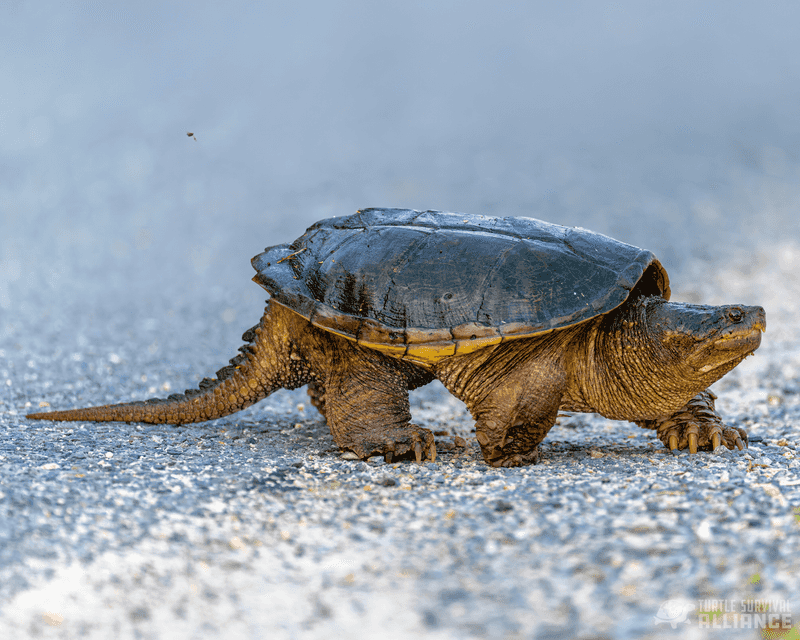
Common snapping turtles are ancient reptiles, their rugged appearance a testament to their evolutionary success. They inhabit Minnesota’s ponds and slow-moving rivers, often seen basking on logs or mud banks.
These turtles are scavengers, feeding on a mix of vegetation, fish, and carrion. Their powerful jaws and long necks make them formidable hunters. Despite their intimidating appearance, they are shy and prefer to avoid confrontation.
Snapping turtles play a crucial role in aquatic ecosystems, contributing to nutrient cycling and water quality. Their presence is an indicator of a healthy, balanced habitat.
American Bullfrog
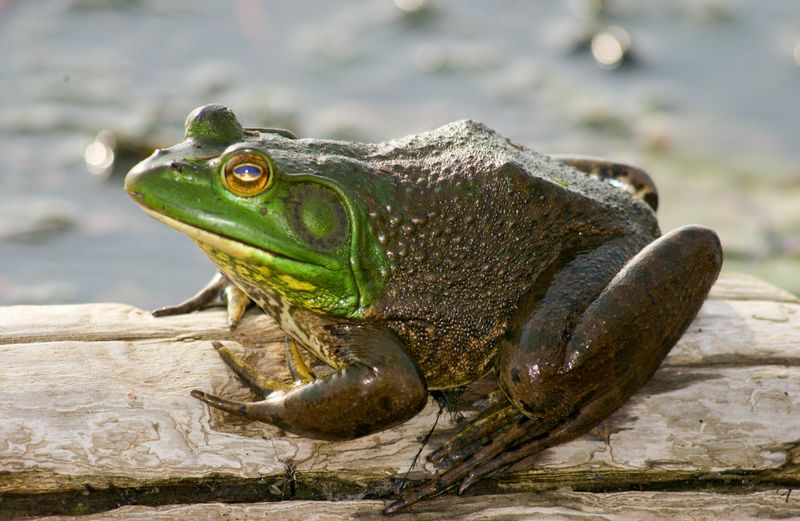
The American bullfrog is a robust amphibian, known for its deep, resonant croak that echoes across Minnesota’s ponds. These frogs are primarily aquatic, thriving in warm, shallow waters.
Bullfrogs are opportunistic feeders, consuming insects, small fish, and even other amphibians. Their presence indicates a healthy aquatic environment, as they require clean water to breed successfully.
Observing a bullfrog in its natural habitat is a treat, their vibrant green bodies and loud calls adding to the soundscape of the wilderness. They are pivotal in controlling insect populations, contributing to ecological balance.
Painted Turtle
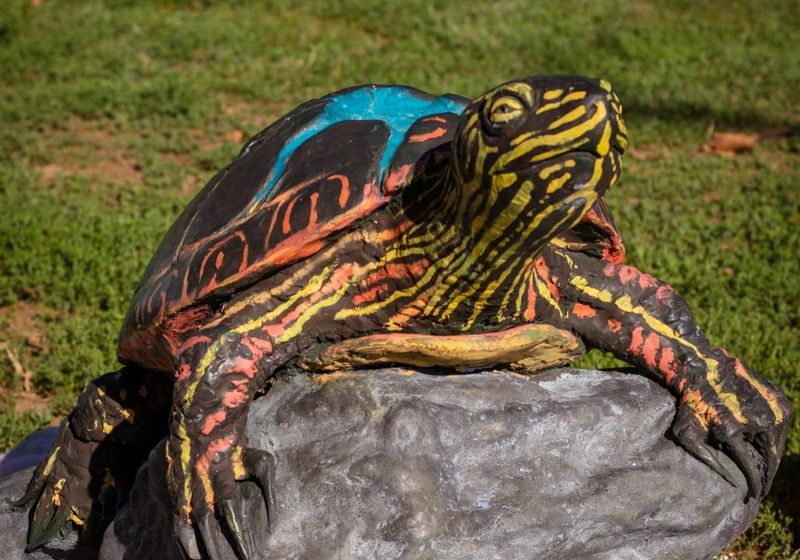
Painted turtles are small, colorful reptiles that add a splash of color to Minnesota’s lakes and ponds. Their striking shell patterns make them a favorite among wildlife enthusiasts.
These turtles are often seen basking on rocks or logs, soaking up the sun to regulate their body temperature. They feed on aquatic plants, insects, and small fish, playing a role in maintaining the health of their aquatic ecosystems.
Painted turtles are a joy to observe, their slow, deliberate movements a contrast to the bustling activity of their surroundings. They symbolize the tranquility and diversity of Minnesota’s wild waters.
White-tailed Deer
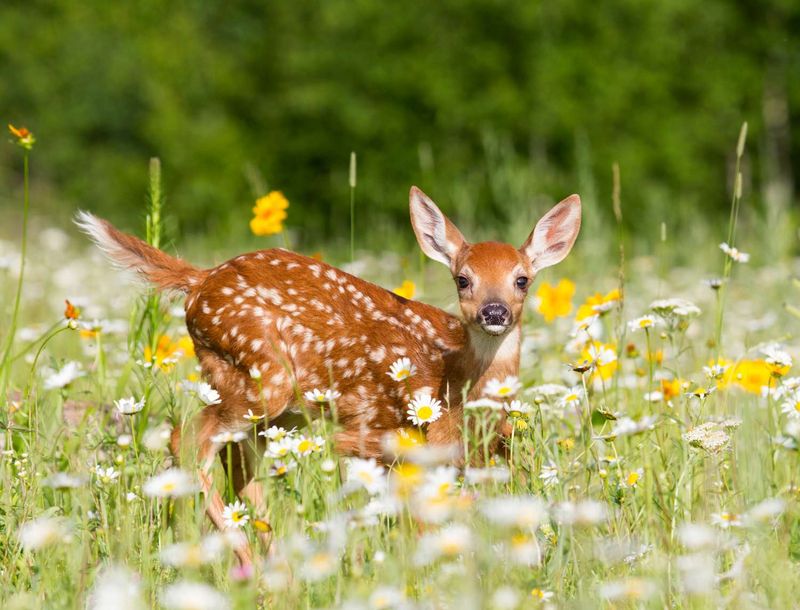
White-tailed deer are a graceful presence in Minnesota’s woodlands and meadows. Recognizable by their distinctive tails, these deer are most active during dawn and dusk.
They are herbivores, feeding on a variety of plants, leaves, and twigs. Their grazing habits help shape the vegetation patterns of their habitat. Observing a deer in the wild is a serene experience, their gentle demeanor inspiring a sense of peace.
Deer play a significant role in the ecosystem, providing prey for predators and contributing to the biodiversity of their environment.
Pileated Woodpecker
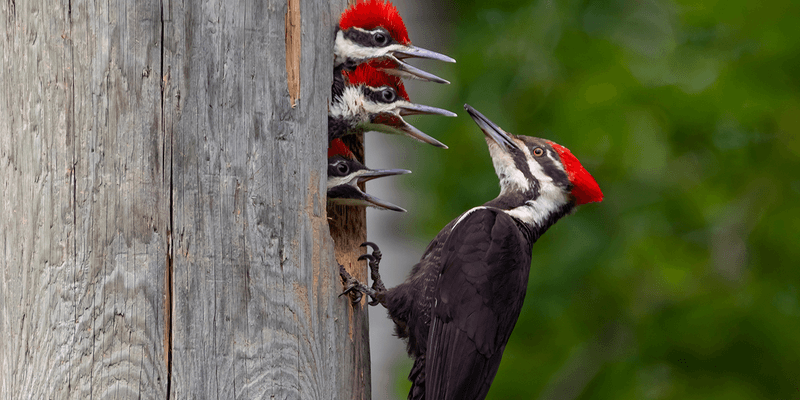
The pileated woodpecker, with its striking red crest and robust build, is a captivating sight in Minnesota’s forests. These birds are known for their loud drumming, a sound created by pecking on trees to find insects.
Woodpeckers excavate large holes in dead trees, providing nesting sites for other species. Their presence indicates a healthy forest, rich in biodiversity. Observing their foraging behavior is fascinating, as they skillfully strip bark to uncover hidden insects.
Pileated woodpeckers contribute to the dynamic balance of the ecosystem, their activities promoting forest regeneration.
Chipmunk

Chipmunks are lively residents of Minnesota’s forests, known for their cheeky behavior and distinctive striping. These small rodents are expert foragers, collecting seeds and nuts to store for winter.
They play a role in seed dispersal, aiding in forest regeneration. Chipmunks are most active during the day, their energetic antics a delight to observe. Watching them dart through the underbrush, cheeks bulging with food, is a common woodland sight.
These endearing creatures exemplify the vibrancy and interconnectedness of life in Minnesota’s wilderness.
Common Nighthawk
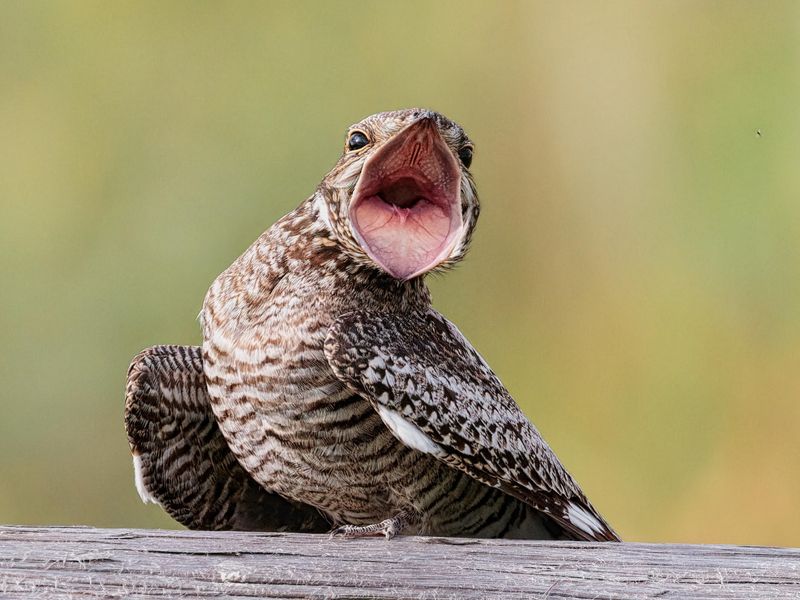
Common nighthawks are agile fliers, often seen swooping through the Minnesota sky during the evening hours. Their distinctive ‘peent’ calls fill the air as they hunt insects on the wing.
These birds thrive in open areas and rely on their excellent camouflage to nest on the ground. Their presence is a sign of healthy insect populations, as they consume vast quantities of mosquitoes and other pests.
Observing nighthawks in flight is mesmerizing, their aerobatic maneuvers a testament to the diversity of avian life in the wilderness. They play a crucial role in maintaining ecological balance.
Boreal Chorus Frog
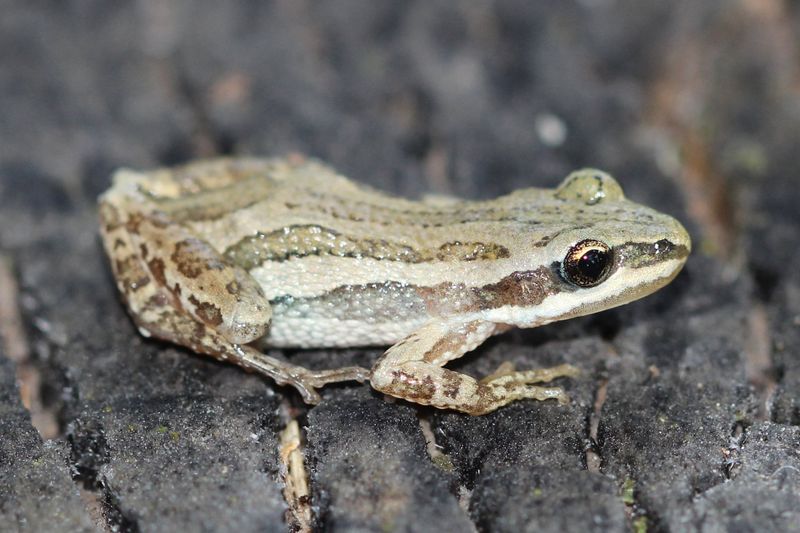
The Boreal Chorus Frog, a diminutive amphibian, thrives in Minnesota’s dense forests. Known for its distinctive three-striped pattern, this tiny frog is often heard before it is seen. Its melodic calls fill the air during the mating season, echoing through the trees.
Despite its small stature, the Boreal Chorus Frog plays a critical role in the ecosystem, helping control insect populations. Its presence is an indicator of environmental health, making it a vital part of the wilderness. As spring arrives, these frogs emerge from their hibernation, adding a musical note to the landscape’s awakening.
Blue-Spotted Salamander
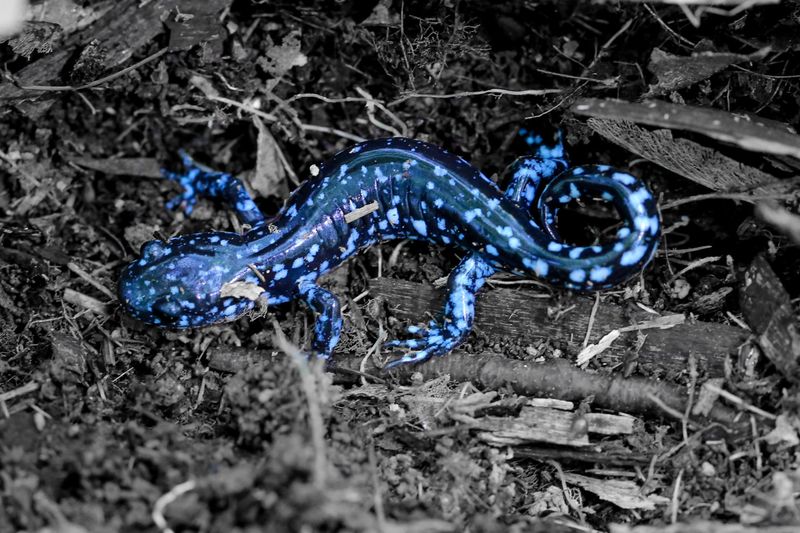
The Blue-Spotted Salamander, cloaked in mystery and vibrant blue spots, is a night-dwelling creature of Minnesota’s woodlands. Its secretive nature makes encounters rare, yet this amphibian is an essential part of the ecological mosaic.
Feeding primarily on insects and worms, the salamander helps maintain the delicate balance of its forest home. During rainy nights, these creatures venture out in search of food, leaving behind trails of wonder. The Blue-Spotted Salamander’s lifecycle, from egg to adult, unfolds in the still waters of secluded woodland ponds, contributing to the region’s biodiversity.
Northern Flying Squirrel
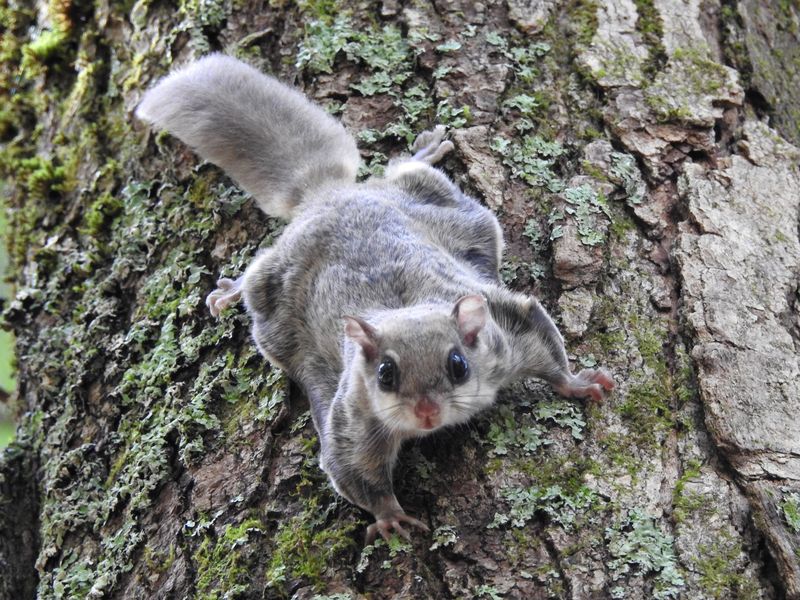
The Northern Flying Squirrel, a nocturnal acrobat, inhabits the towering trees of Minnesota’s wilderness. These small, agile rodents are capable of gliding long distances between trees, using flaps of skin that act like a parachute.
They are vital to forest health, spreading fungi spores crucial for tree growth. As night falls, the forest becomes their playground, with these squirrels moving gracefully through the canopy.
Beyond their ecological role, Northern Flying Squirrels add a sprinkle of magic to this untamed landscape, reminding us of the wonders that hide in Minnesota’s remote reaches.

